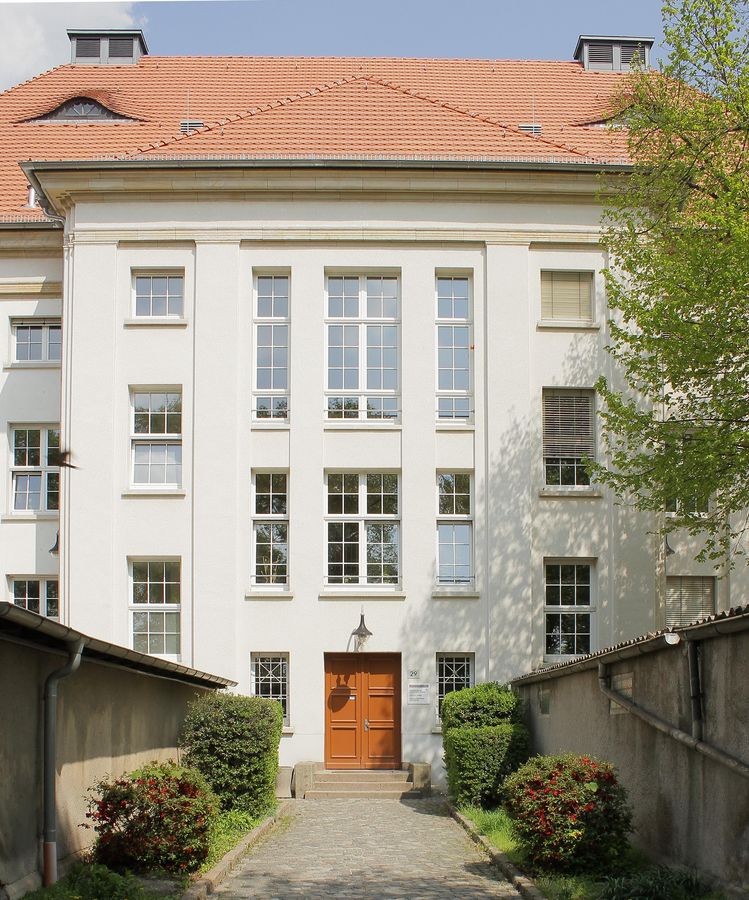The Institute of Bacteriology and Mycology of the Faculty of Veterinary Medicine was founded 25 years ago. However, its origins date back to 1902, when the Chair of Animal Hygiene, Bacteriology and Infectious Diseases was established.
A look back
Veterinary medicine is a young scientific discipline since the first veterinary school was founded in Lyon in 1761. Two factors played a significant role in the foundation of veterinary institutions:
- A number of rinderpest movements resulted in a 90% decrease of the cattle population in some countries.
- Horses were considered important military and civilian means of transport in the 18th and 19th centuries. Therefore, their medical care was of enormous importance.
In 1777, first lectures in veterinary medicine and animal health research were given at the University of Gießen.
- The veterinary medical faculty in Leipzig has its origins in the College of Veterinary Medicine in Dresden, founded in 1780.
- 1869 the Agricultural Institute was founded in Leipzig, to which the Veterinary Institute with clinic and polyclinic was affiliated. In 1869 the Veterinary Institute moved to the newly built Veterinary Clinic on Linnéstraße. Anton Zürn took over the management, from 1899 August Eber.
- In 1889, the college was raised to the “Veterinary University of Dresden”. During this time, more and more chairs were set up due to the increasing specialisation of the branches of science.
- Thus, in 1920, under the direction of Martin Klimmer, the Chair of animal hygiene, bacteriology and infectious diseases was created with a lectureship for milk and feeding science.
- In 1923, the College of Veterinary Medicine Dresden was relocated to the new buildings of the newly established Veterinary Faculty in Leipzig. The animal health research institute was incorporated, expanded its teaching and research activities and was renamed in “Institute of Animal Health Research and Animal Food Science”.
- The Institute of Animal Health Research kept a unique position within the Veterinary Faculty. At the beginning of the thirties, his rank, status and scientific achievements were outstanding, even due to the director and later dean August Eber. As a “last polymath” he gained reputation beyond Saxony and was nominated as a member of the Leopoldina in 1935. August Eber hold three chairs: Agricultural Veterinary Medicine, Veterinary Police and Animal Health Research as well as meat hygiene and Animal Food Science. Consequently, he covered a wide-reaching veterinary field.
-
In 1935, after August Eber’s retirement, the Institute of Animal Health Research was fused with the Institute of Veterinary Hygiene under the direction of Martin Klimmer. Since that time, the institute distinguished itself as a vaccine laboratory due to Klimmers close links to the vaccine industry.
-
In 1938, Adolf Meyn, an expert in the scientific field of Anaerobes, was appointed as director and full professor for Veterinary Hygiene, Animal Health and Veterinary Police.
-
The outbreak of war in 1939 led to a dramatic personnel situation. Some professors and most of the assistants were enlisted. The number of scientific publications and dissertations decreased by 65-75%. In 1943, the Institute of Animal Health Research was completely destroyed through an allied bombing attack. The American invasion of Leipzig on April 20, 1945 terminated teaching in the whole university, which was resumed on February 5, 1946.
- In 1950, Wilhelm Nusshag, 1952 Kurt Dedié directed the Institute of Veterinary Hygiene and Animal Health Research. The institute was located in the Margarete-Blank-Straße 8, now known as An den Tierkliniken 29.
- In 1958, Arthur Voigt was appointed to the renamed Institute of Veterinary Microbiology and Animal Health Research with the new section Poultry Diseases (head: Günter Hille). There was a close cooperation to the newly established Animal Health Office of the district of Leipzig.
- In 1967, the independent National Veterinary Laboratory and Animal Health Office was outsourced for routine diagnostics.
- In 1968, the “Section Animal Production and Veterinary Medicine” was founded and the institutes and clinics were transferred to “Teaching Groups”. Soon after the “Teaching Groups” were renamed in “Expert Groups” and 1978 in “Scientific Sections”.
-
From 1980, Günter Hille replaced Arthur Voigt as provisional director for the Scientific Section Microbiology and Animal Health Research. In 1983, Heinrich Liebermann took over the management.
-
On January 5, 1990, the restoration of an independent Veterinary Medicine and the development of two faculties (Institute for Agricultural Sciences and the Faculty of Veterinary Medicine) was resolved.
-
In October, 1991, the Faculty of Veterinary Medicine regained its independence. The Scientific section was renamed in Institute of Microbiology and Animal Health Research.
-
In 1993, Monika Krüger was appointed as provisional director. She changed the institute’s structure, which led to the separation into the Institute of Bacteriology and Mycology (head: Monika Krüger) and Institute of Virology (head: Hermann Müller).
-
In 2007, five centres or clinics were established for pooling forces and strengths and a more professional profile. The Institute of Bacteriology and Mycology, the Institute of Immunology, the Institute of Parasitology and the Institute of Virology are assigned to the Centre of Infectious Diseases.
-
After the retirement of Monika Krüger in 2014, Christoph Georg Baums was appointed as director for the Institute of Bacteriology and Mycology.
